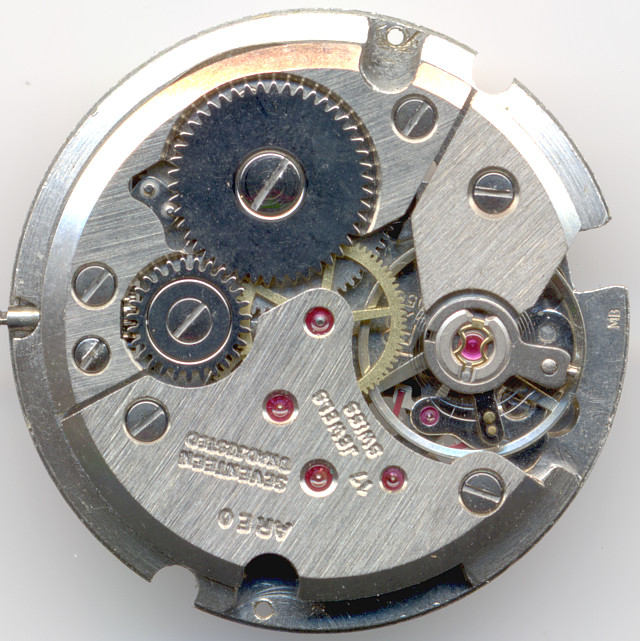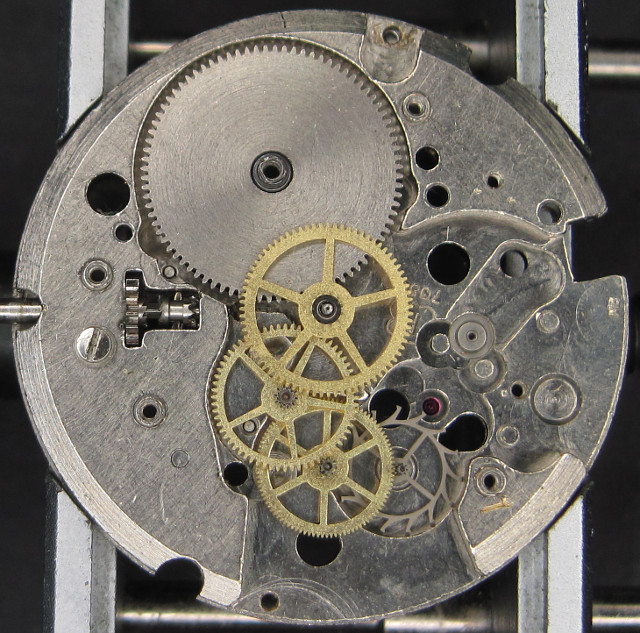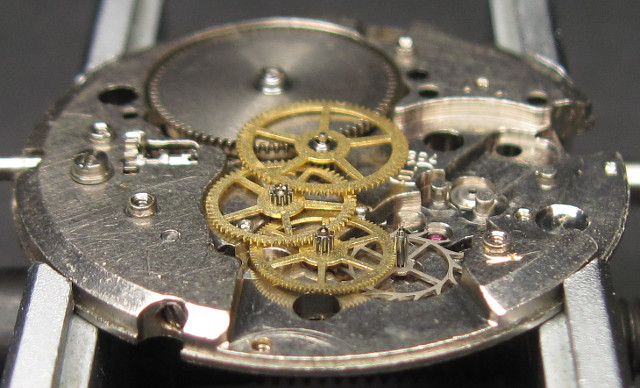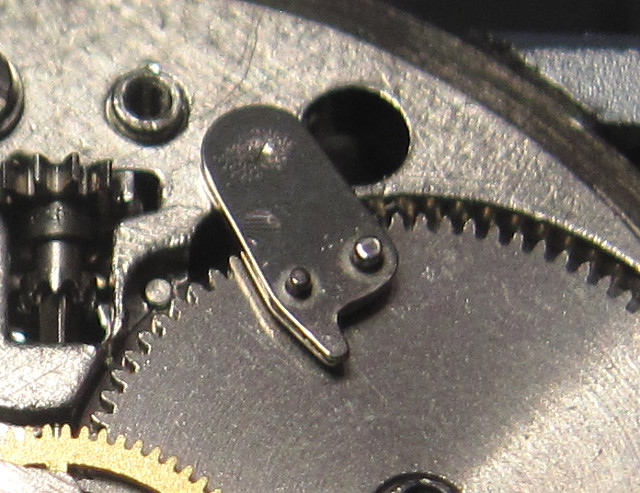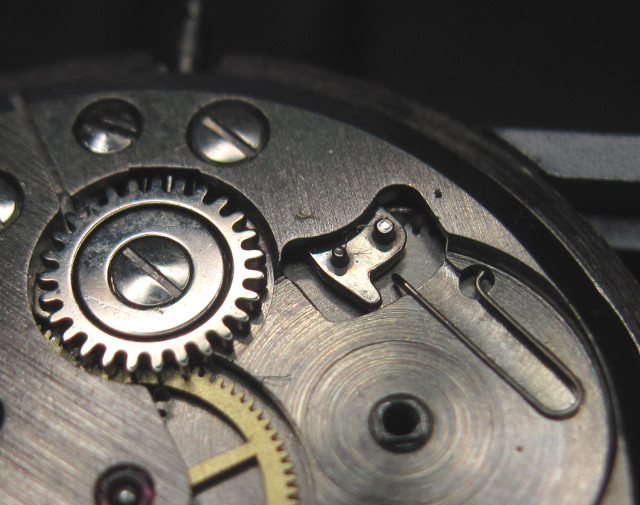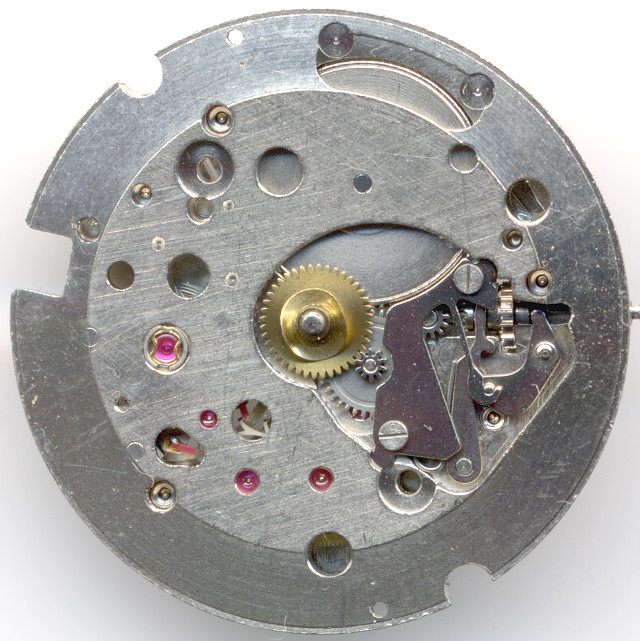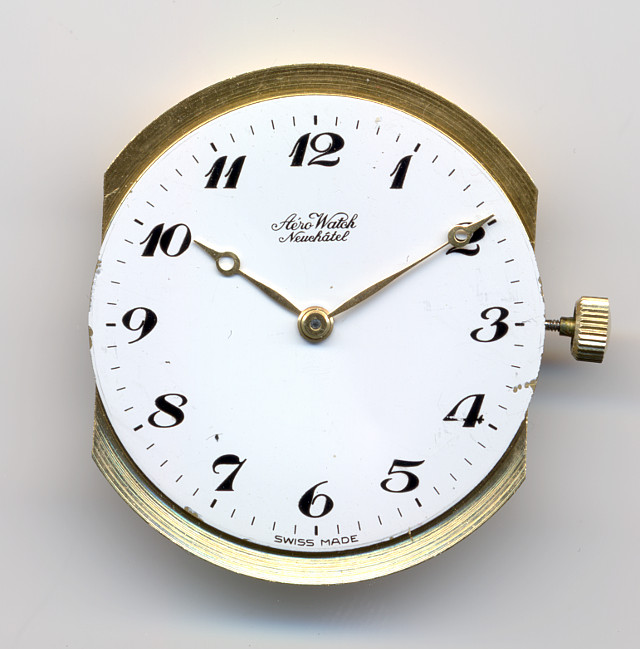Description
Video on YouTubeThe 11/2 ligne Peseux 7050 is part of the final movement family from Peseux. It bases on flat base caliber 7040. The rest is identical.
There’s also a directly relative, the caliber Peseux 7070, which has got the same diameter, but is a little less flat because of a higher mainspring barrel.
The caliber family 7040-7077 was launched in the late 1960ies and consists of flat manual wind movement with or without date and/or day-date indication. There’s no center second indication, only (if desired) a decentral second indication at “6”.
On the massive base plate, you can see the enlargement, especially on the mainspring area.
All bearings, including those of the minute wheel, are equipped with ruby bearings, only the mainspring barrel doesn’t need them because of the low rotation speed and high torque.
Since many decades, the gear train is the same and goes back to the three-digit calibers from the 1940ies. The only thing, that has changed, apart from the slightly faster beat rate, is, that the minute wheel is now beared under the gear bridge and no longer under the winding bridge.
Like on early pocket watch movements, the gear train consists of a directly driven minute wheel, followed by second wheel, third wheel at “6” and finally the escapement wheel. With a prologed axle of the third wheel, you can have a decentral seconds indication.
The three leg anular balance is beared in two Incabloc shock protections and beats contemporarily fast with 21600 A/h.
An interesting, inasmuch as very modern constructed detail, is the ratchet of the Peseux 7050:
The ratched is a stamped part of metal, whose pivot sticks in the main plate, and whose two other pivots interfere with the ratchet wheel. This probably conserves the wheel and is also quite cheap.
The U-shaped spring is not connected to one of the pivots, but to the “nose” of the ratchet, which is below the ratchet wheel. A pragmatic and safe solution.
On the dial side, you can see, how flat the base plate is. It’s not 1/100 of a millimeter too high.
The setting lever spring is characteristically shaped and also locks the wheels on the dial side.
Additionally, you can see the yoke winding system and the holes for oiling and checking the pallets.
In the lab
Timegrapher result
The timegrapher results are very well, only the amplitude is a little bit low, but that’s absolutely OK for a movement, which is 30 or 40 years old and in need for an oil change. After that, it might even reach the chronometer specifications, which shows, what a great construction this movement is.| horizontal positions | |||
|---|---|---|---|
| dial up | -7 s/d | 249° | 0.4ms |
| dial down | 0 s/d | 211° | 0.3ms |
| vertical positions | |||
| crown right (12 up) | -19 s/d | 220° | 0.2ms |
| crown up (3 up) | -26 s/d | 216° | 0.1ms |
| crown left (6 up) | -38 s/d | 217° | 0.5ms |
| crown down (9 up) | -22 s/d | 224° | 0.5ms |
Technical data
| Manufacturer: | Peseux |
| Caliber: | 7050 |
| Size: | 11 1/2''' |
| A/h: | 21600 |
| lift angle: | 52° |
| Number of jewels: | 17 |
| Escapement: | Pallet lever |
| Balance types: |
Nickel anular balance |
| Shock protection(s): |
Incabloc |
| Balance bearing / direction hairspring: | Clockwise |
| Moveable stud: | yes |
| Adjust mechanism: | Hairspring key |
| Construction: |
|
| Construction type: | solid construction |
| Winding mechanism: | yoke winding system |
| Setting lever spring: | 2 hole(s) |
| References: |
Flume: K3 42 |
| Mentioning in literature (years): | 1968 |
